When faced with a burn, distinguishing it can be difficult. Burns can range from a minor burn to a serious burn. The first step is to determine the extent of damage to body tissues.
There are three burn classifications: first-degree burn, second-degree burn and third-degree burn. In addition, there are also ice burns.
1st – First Degree Burn:
This burn is the least serious of burns. The burn only affects the outer layer of skin, not penetrating all the way through.
- The skin is usually red
- Often there is swelling
- Pain sometimes is present
You can treat a first-degree burn as a minor burn unless it involves substantial portions of the hands, feet, face, groin, buttocks, or a major joints. These require emergency medical attention.
2nd – Second Degree Burn:
This is when the first layer of skin has been burned through and the second layer of skin (dermis) also is burned. The injury is called a second-degree burn.
- Blisters develop
- Skin takes on an intensely reddened, splotchy appearance
- There is severe pain and swelling.
If the second-degree burn is no larger than 3 inches in diameter, treat it as a minor burn. If the burned area is larger or if the burn is on the hands, feet, face, groin or buttocks, or over a major joint, treat it as a major burn and get medical help immediately.
Burn Treatment (First and Second Degree):
For minor burns, including first-degree burns and second-degree burns limited to an area no larger than 3 inches in diameter, take the following action:
Cool the burn. Hold the burned area under cool running water for 10 or 15 minutes or until the pain subsides. If this is not possible, immerse the burn in cool water or cool it with a cold compress. Cooling the burn reduces swelling by conducting heat away from the skin. Don’t put ice on the burn.
Cover the burn with a sterile gauze bandage. Don’t use fluffy cotton, or other materials that may get lint in the wound. Wrap the gauze loosely to avoid putting pressure on burned skin. Bandaging keeps air off the burn, reduces pain, and protects blistered skin. Providing proper wound care is important to prevent infection.
Take an over-the-counter pain reliever. These include aspirin, ibuprofen (Advil, Motrin, others), naproxen (Aleve), or acetaminophen (Tylenol, others).
Use caution when giving aspirin to children or teenagers. Though aspirin is approved for use in children older than age 2, children and teenagers recovering from chickenpox or flu-like symptoms should never take aspirin. Talk to your doctor if you have any concerns.
Minor burns usually heal without further treatment. They may heal with pigment changes. Watch for signs of infection, such as increased pain, redness, fever, swelling, or oozing.
If an infection develops, seek medical help. Avoid re-injuring or tanning if the burns are less than a year old — doing so may cause more extensive pigmentation changes. Use sunscreen on the area for at least a year. Use aloe vera products also help with burn treatment.
What Not to Do After Burn:
- Don’t use ice. Putting ice directly on a burn can cause a person’s body to become too cold and causes further damage to the wound.
- Don’t apply egg whites, butter or ointments to the burn. This could cause infection.
- Don’t break blisters. Broken blisters are more vulnerable to infection.
3rd – Third Degree Burn:
The most serious burns involve all layers of the skin and cause permanent tissue damage. Fat, muscle and even bone may be affected. Areas may be charred black or appear dry and white. Difficulty inhaling and exhaling, carbon monoxide poisoning, or other toxic effects may occur if smoke inhalation accompanies the burn.
For major burns, call 911 or emergency medical help.
What to Do Until Medical Help Arrives?
- Don’t remove burned clothing. However, do make sure the victim is no longer in contact with smoldering materials or exposed to smoke or heat.
- Don’t immerse large severe burns in cold water. Doing so could cause a drop in body temperature (hypothermia) and deterioration of blood pressure and circulation (shock).
- Check for signs of circulation (breathing, coughing or movement). If there is no breathing or other sign of circulation, begin CPR.
- Elevate the burned body part or parts. Raise above heart level, when possible.
- Cover the area of the burn. Use a cool, moist, sterile bandage; clean, moist cloth; or moist cloth towels.
Ice Burns: Yes Ice Can Burn!
Yes, ice can burn the skin and cause frostbite as well! When treating an injury with ice you need to make sure that you put a towel or sheet between the ice and your skin.
In some cases, the ice burns look similar to a sunburn, and may not blister or cause any severe damage. You might realize you have an ice pack burn if you develop blisters if your skin is yellowish-gray in color. It may feel numb, itchy, or painful with a burning sensation.
Treating Ice Burn Blisters
Blistering is a sign of an ice pack burn, just as with heat burns. Treating the blisters correctly will help avoid infection and further complications.
You may develop an open wound as a result of incorrect usage of an ice pack. Treat the wound as you would any other, with antibiotic ointments, a barrier substance such as petroleum jelly, and gauze bandages to keep the area moist and free of infection. If the blistered area is large, you might need to change the dressings and re-apply first aid to the area for up to 10 days.
When to Seek Medical Care for an Ice Burn:
- An ice pack burn or frostbitten area that does not begin to tingle, burn, or regain a pinkish hue. It may be the sign of more extensive damage to the blood vessels and muscles underneath the skin.
- If the burned area stays numb with skin that feels hard and cold, you may need professional medical attention.
- Contact your family doctor to determine what course of action to take to avoid complications such as nerve damage and gangrene.
- Remember, ice is good for injuries but cannot be applied directly to the skin.
Additional Burn Treatment:
- Get a tetanus shot. Burns are susceptible to tetanus!
- Doctors recommend you get a tetanus shot every 10 years. If your last shot was more than five years ago, your doctor may recommend a tetanus shot booster.
- Serious burns such as third-degree burns can require skin grafts.
- Burns are also at risk for infection. Make sure you visit a doctor right away if you suspect your burn has become infected.
Other Types of Burns:
There are many other types of burns. These include chemical burn, electrical burn, thermal burns, and fourth degree burns. If you suspect you have any of these mentioned, dial 911

